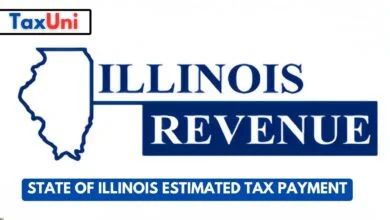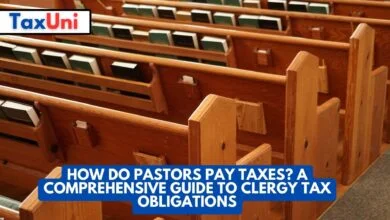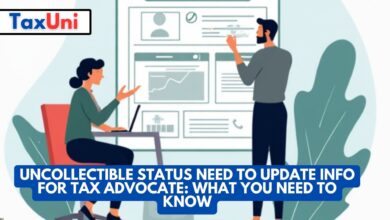IRS Communication Breakdown: Understanding and Resolving Tax Notices and Discrepancies
IRS Communication Breakdown: Strategies for Effectively Responding to Tax Notices and Resolving Discrepancies with the IRS - A Comprehensive Guide to Understanding IRS Tax Notices, Identifying Discrepancies, and Communicating with the IRS to Achieve Resolution and Peace of Mind.

Contents
- Section 1: Common Types of IRS Tax Notices
- Section 2: Reasons for Tax Discrepancies
- Section 3: Steps to Resolve Tax Discrepancies
- Section 4: Preventing Future Tax Discrepancies
- Section 5: Frequently Asked Questions (FAQs)
- Section 6: Working with Tax Professionals
- Section 7: Understanding Your Rights as a Taxpayer
Dealing with the Internal Revenue Service (IRS) can be a daunting experience, especially when you receive a notice regarding tax discrepancies. This article aims to provide clarity on the different types of tax notices, the reasons for discrepancies, and the steps you can take to resolve them. Understanding the process and taking appropriate action can minimize stress and avoid potential penalties.
Section 1: Common Types of IRS Tax Notices
1.1 Notice of Underreported Income (CP2000)
This notice indicates that the information on your tax return does not match the information reported to the IRS by third parties, such as employers or financial institutions. Common reasons include:
- Unreported income
- Incorrectly reported income
- Missing or incorrect tax credits or deductions
1.2 Notice of Balance Due (CP14)
This notice is sent when your tax account has an outstanding balance. This may occur due to the following:
- Underpayment of taxes
- IRS calculation errors
- Incorrectly applied payments
1.3 Notice of Intent to Levy (CP504)
The IRS sends this notice when you have an unpaid tax debt, and they intend to seize your assets. This can include:
- Bank accounts
- Wages
- Social Security benefits

Section 2: Reasons for Tax Discrepancies
2.1 Filing Errors
Common filing errors include:
- Incorrect filing status
- Incorrectly claimed dependents
- Math errors
2.2 Unreported or Incorrectly Reported Income
This occurs when you fail to report all your income or report it inaccurately. Examples include:
- Wages
- Interest and dividends
- Rental income
2.3 Claiming Ineligible Tax Credits or Deductions
Claiming tax credits or deductions you do not qualify for can result in discrepancies. Examples include:
- Education credits
- Child tax credit
- Home office deductions
Section 3: Steps to Resolve Tax Discrepancies
3.1 Review the Tax Notice Carefully
Read the notice thoroughly to understand the issue and what the IRS is requesting.
3.2 Gather Relevant Documentation
Collect all necessary documents to support your case, such as:
3.3 Contact the IRS or a Tax Professional
If you need assistance or have questions, contact the IRS or consult with a tax professional.
3.4 Respond to the Notice
Send a written response to the IRS, including any requested documentation, within the specified time frame.
3.5 Pay Any Amounts Due
If you agree with the notice, pay the amount due as soon as possible to avoid additional penalties and interest.

Section 4: Preventing Future Tax Discrepancies
4.1 Maintain Accurate Records
Keep accurate records of all income, expenses, and tax-related documents.
4.2 Review Tax Laws and Updates
Stay informed about changes to tax laws and regulations.
4.3 File Your Taxes on Time
Avoid late filing penalties and interest by submitting your tax return by the deadline.
Section 5: Frequently Asked Questions (FAQs)
What should I do if I disagree with the notice?
If you disagree with the notice, respond in writing with a detailed explanation and provide supporting documentation.
Can I request an extension to respond to the notice?
In some cases, you may be able to request additional time to respond. Contact the IRS to discuss your options.
What if I can’t pay the amount due?
If you cannot pay the full amount, you may be eligible for a payment plan or an Offer in Compromise. Contact the IRS to discuss your options.

Section 6: Working with Tax Professionals
6.1 Benefits of Hiring a Tax Professional
Hiring a tax professional can help you:
- Navigate complex tax laws
- Ensure accurate filing
- Represent you before the IRS
6.2 Types of Tax Professionals
There are several types of tax professionals, including:
- Certified Public Accountants (CPAs)
- Enrolled Agents (EAs)
- Tax Attorneys
6.3 Finding the Right Tax Professional
Consider the following factors when choosing a tax professional:
- Experience and expertise
- Reputation
- Fees and services

Section 7: Understanding Your Rights as a Taxpayer
7.1 The Right to Be Informed
You have the right to clear explanations of tax laws and IRS procedures.
7.2 The Right to Quality Service
You have the right to prompt, courteous, and professional service when dealing with the IRS.
7.3 The Right to Pay No More Than the Correct Amount of Tax
You have the right to pay only the amount of tax legally due, including interest and penalties.
Dealing with tax notices and discrepancies can be stressful and time-consuming. By understanding the types of notices, reasons for discrepancies, and steps to resolve them, you can effectively address these issues and prevent future problems. Don’t hesitate to consult a tax professional for assistance and remember to maintain accurate records, stay informed about tax laws, and file your taxes on time.





